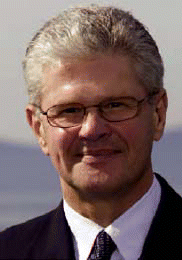Although there are no special considerations for otolaryngologists to bear in mind for using conscious sedation, those who want to use it in their offices generally need more training, because it is not emphasized in residency, Dr. Papel said. He stressed that using it effectively requires different skills from those used to administer general anesthesia, which may be the frame of reference for most otolaryngologists.
Explore This Issue
December 2006When a patient is under conscious sedation, the physician should monitor blood pressure, pulse, and blood oxygen saturation. Therefore, they should use the following monitoring equipment: a continuous blood pressure cuff, an electrocardiograph machine, and a pulse oximeter.
Responsive but not Reactive
The patient should be responsive to questions and directions, but should not be reacting to the procedure. You don’t want them to be too depressed, but the patient should not be feeling the procedure and having a bad experience, Dr. Papel said. Although the patient is awake and can respond to questions, he or she may not remember the procedure.
When offering conscious sedation to patients, physicians need to tell them that they cannot drive home and also should not rely on a taxi, because they may not be able to communicate directions effectively. Therefore, they should have a responsible family member or friend drive them instead. They should also not make any important decisions for 48 hours after receiving sedation, and they may feel the after- effects of sedation for several hours. Physicians should watch patients for approximately one-half hour after the procedure to make sure it is safe for them to leave. They should be breathing well, alert, and mobile.
Using conscious sedation should be feasible for most otolaryngologists, said Dr. Papel. Thousands of physicians are using it all over the country. If you have the proper monitoring equipment and remember that safety comes first, it should go well.
Caution Is in Order
Like Dr. Papel, Alastair Carruthers, MD, stressed in a phone interview that caution should be the guidepost for conscious sedation for any procedure. He is a clinical professor of dermatology at the University of British Columbia in Vancouver, British Columbia, Canada, and he is the president-elect of the American Society for Dermatologic Surgeons.
I think conscious sedation is extremely valuable in the right set of circumstances, he said. You want to have a patient with a good anesthetic risk, and you want a facility that is properly equipped, with proper monitoring and drugs to induce sedation and correct sedation if any problems occur.
He added that some procedures may not be appropriate for conscious sedation, or that the typical approach needs to be modified for a sedated patient. I don’t think it’s appropriate for liposuction unless you use a lower safe level of lidocaine, he said, noting that lidocaine and sedating agents are metabolized by the same liver enzymes, and therefore, the risk of drug-drug interaction is increased.

Leave a Reply